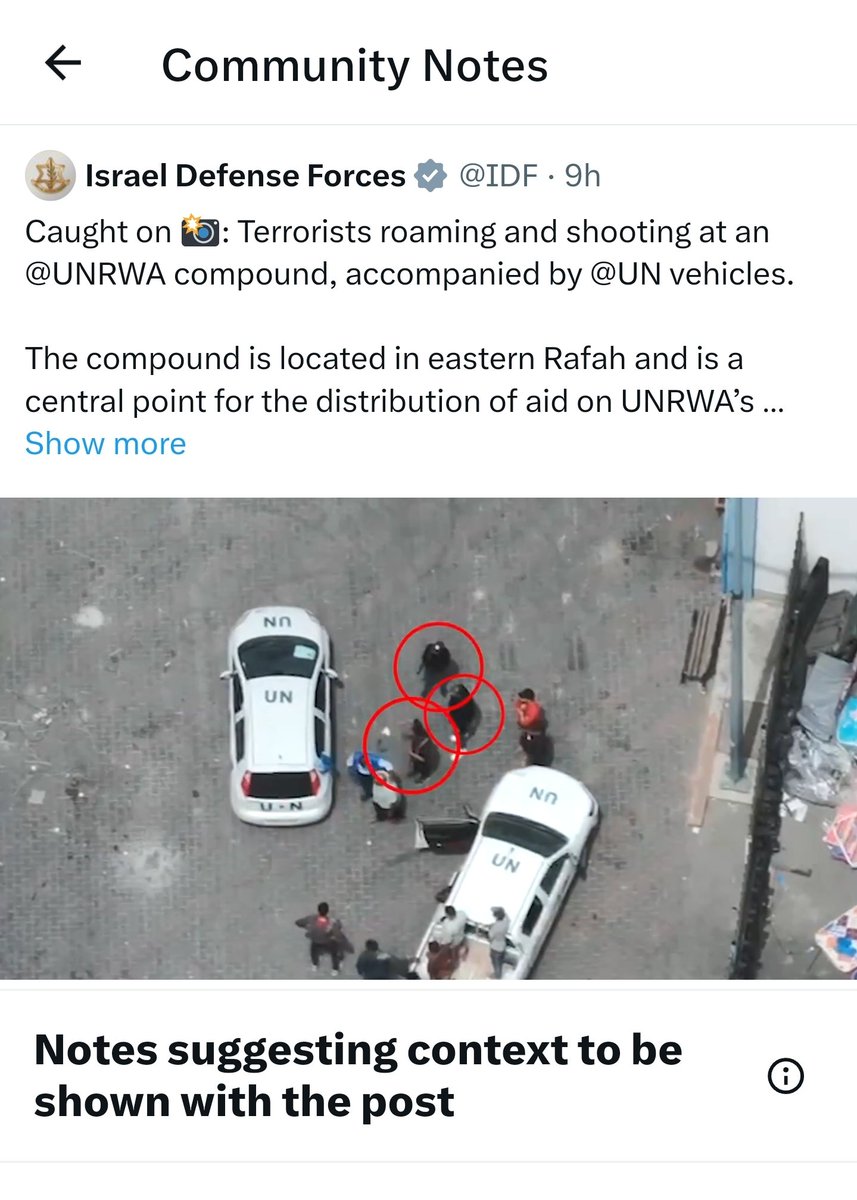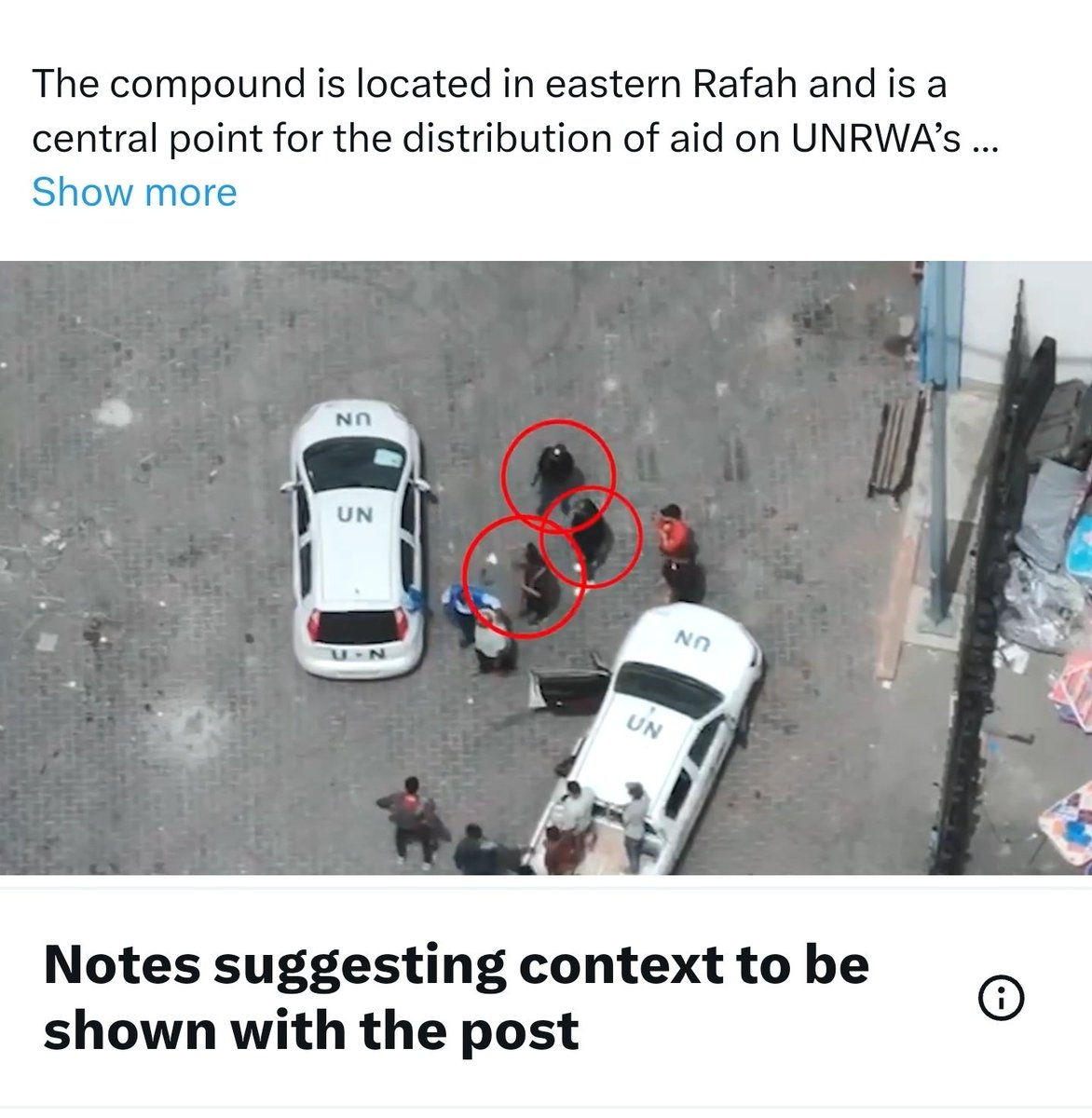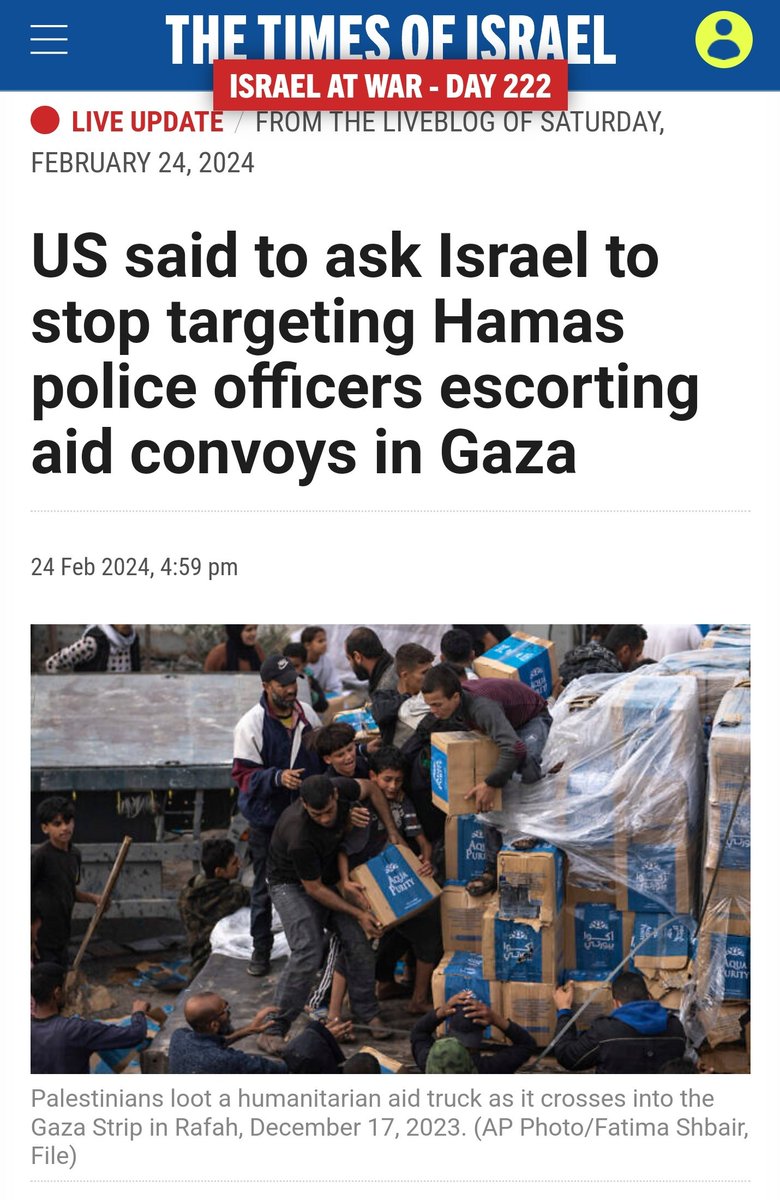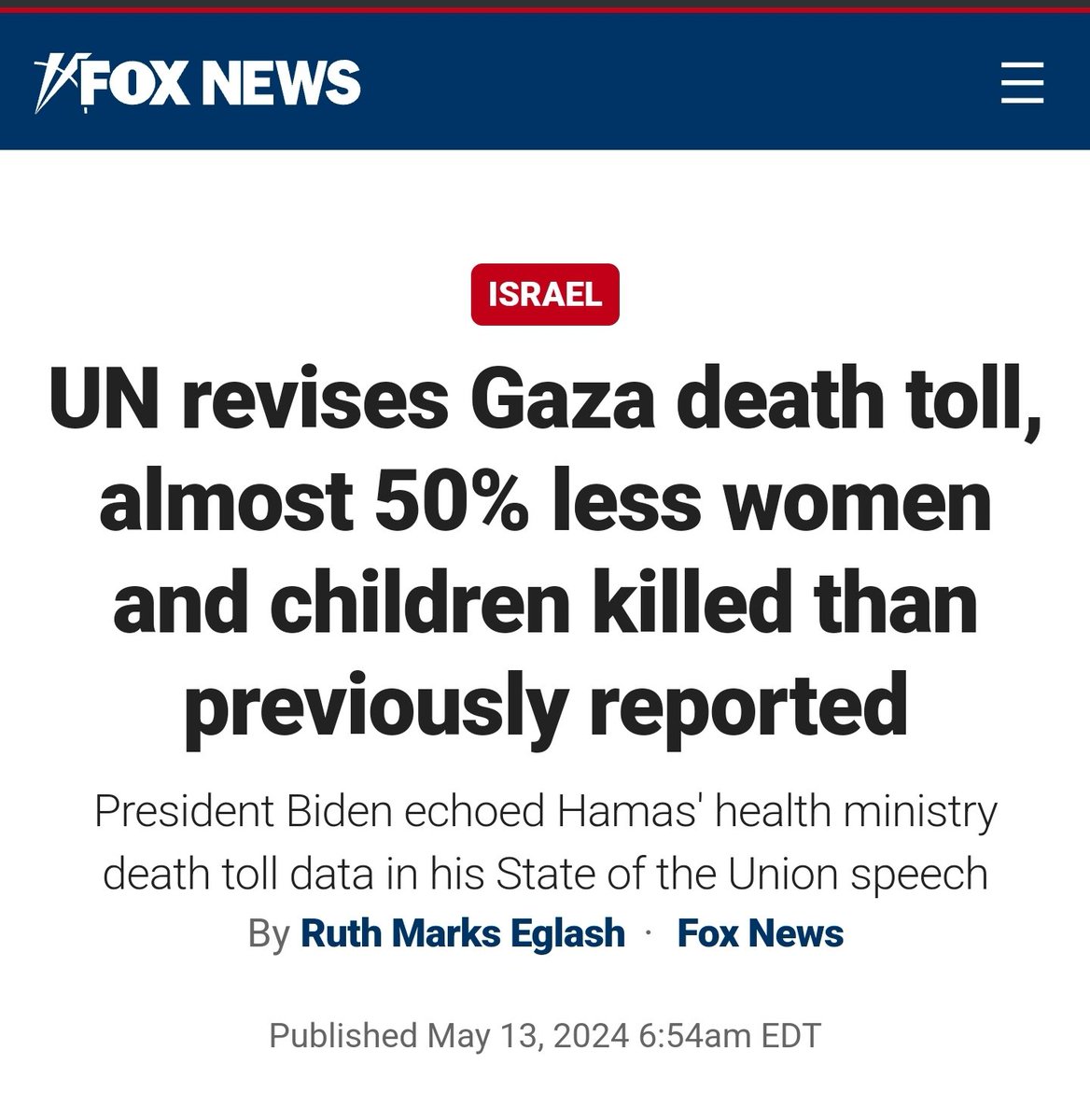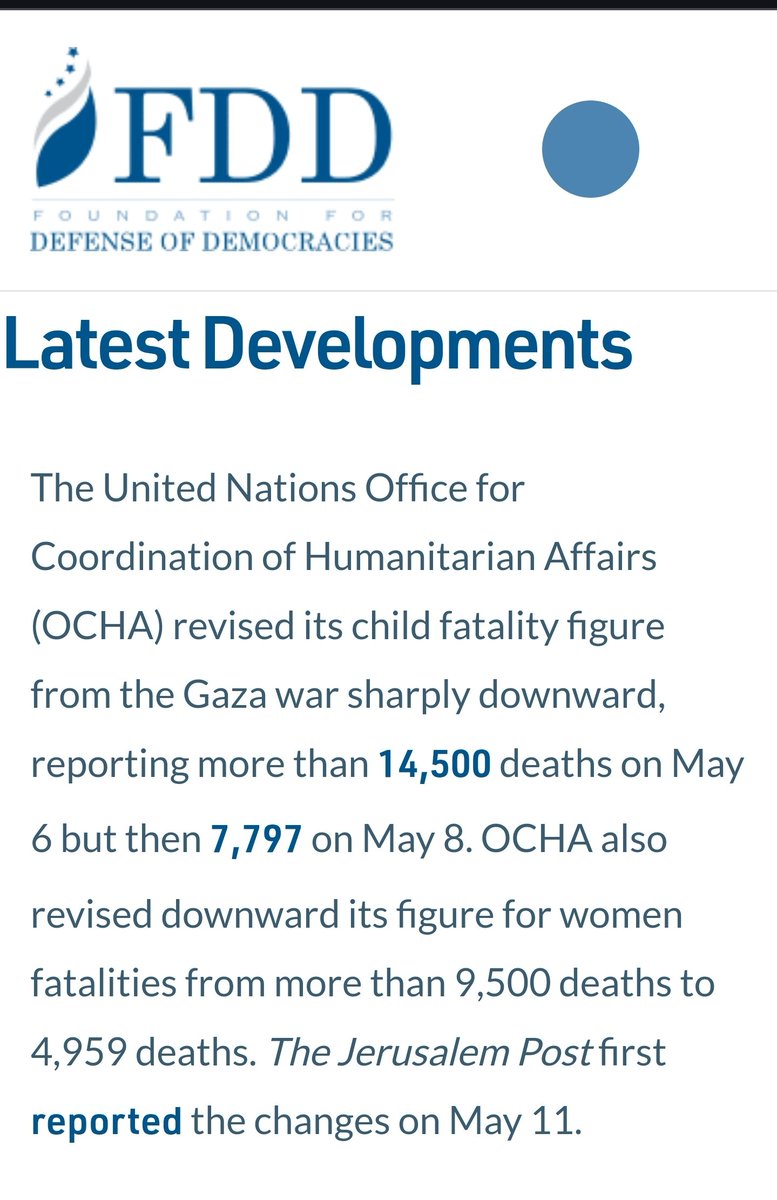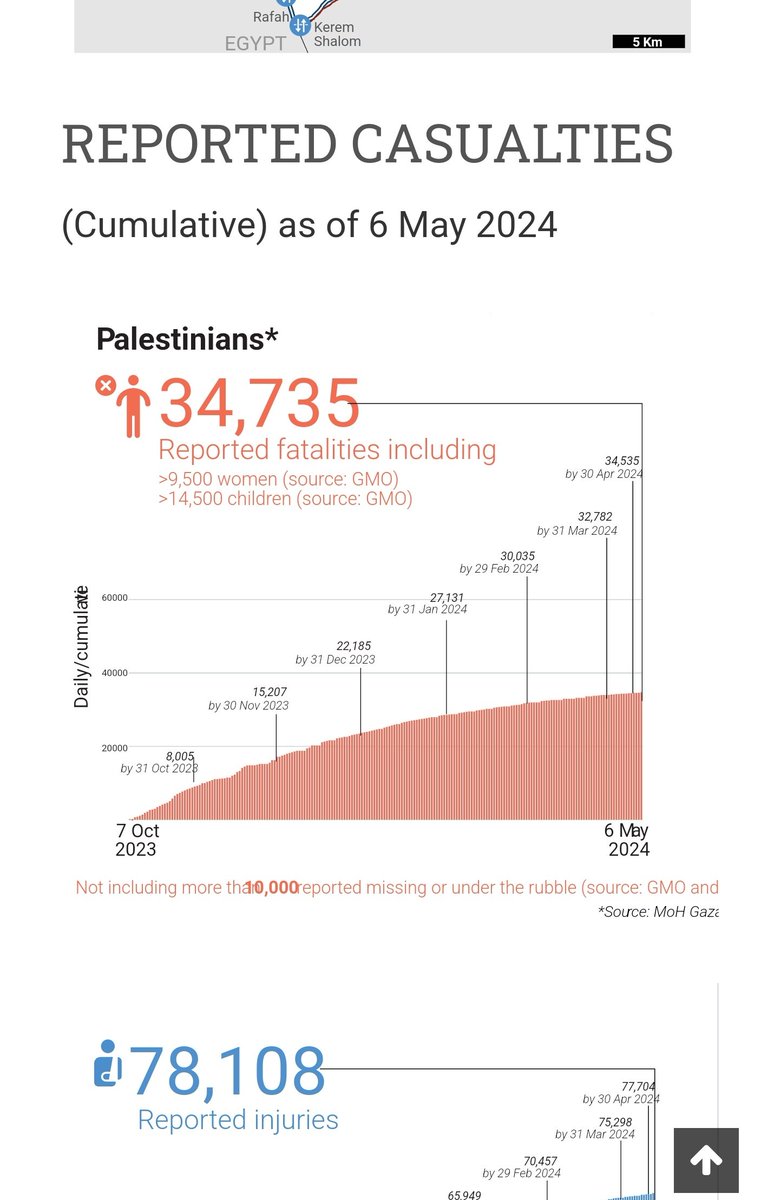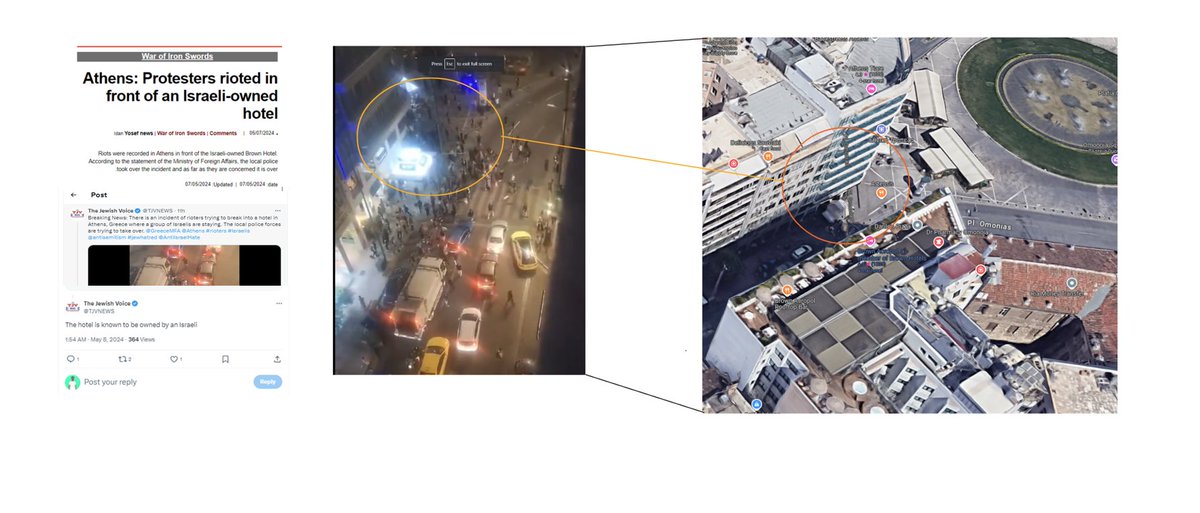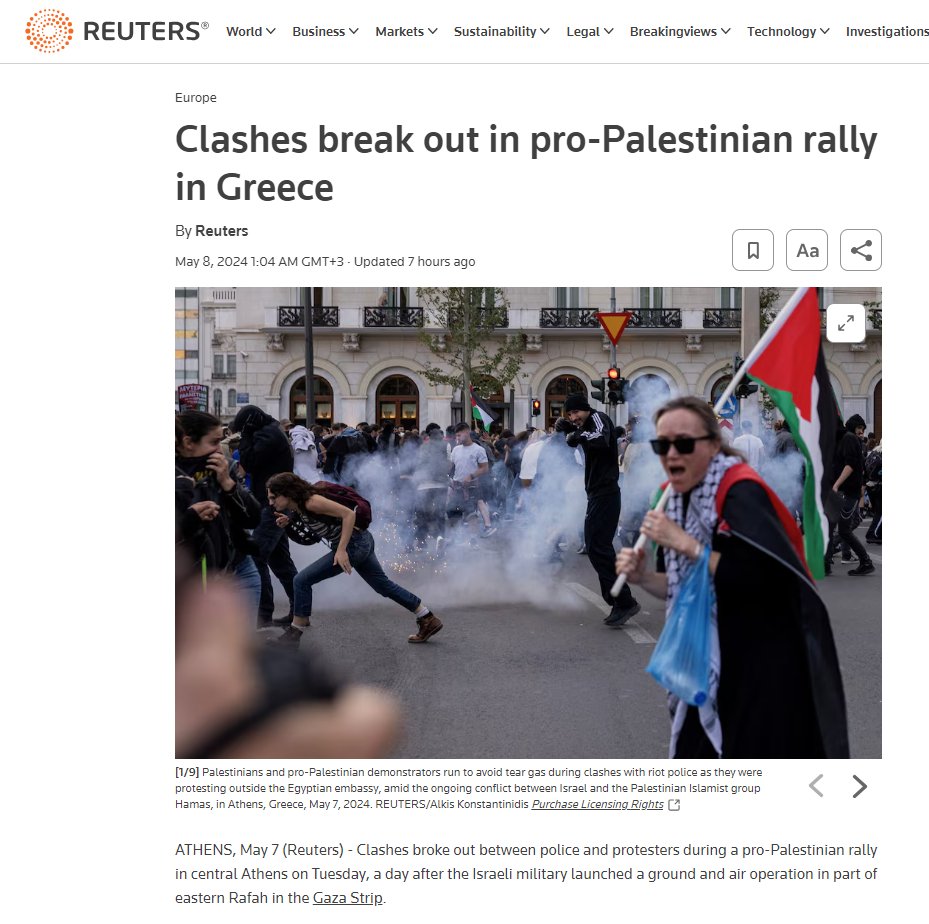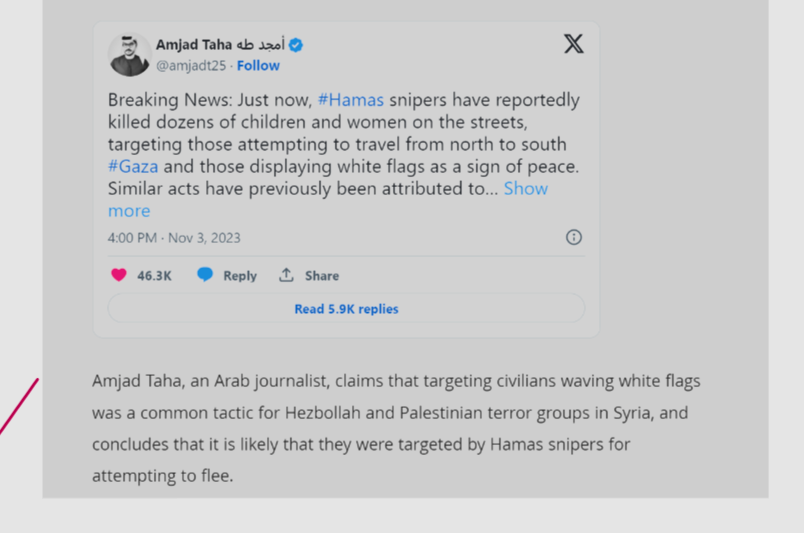🧵1/ There is some confusion going on around the strike in Rafah. This is largely due to awful IDF instructions. In a video on 22nd May IDF spokesman @AvichayAdraee told people that Zones 2371, 2373, 2360 were safe. I have highlighted this below.

https://x.com/AvichayAdraee/status/1793167253514473962

2/ The source of the confusion lies in the fact that the image of the highlighted map in @AvichayAdraee's video DOES NOT match the text. The image initially does not include zones 2371, 2373, 2360 yet the text explicitly states they are safe. 

3/ However the location of the strike has been reported to be both 2371 and 2372. Existing geolocation by @m_osint and Al Jazeera suggests it was in 2372, not 2371. Zone 2372 was not explicitly mentioned by the IDF. However...






4/ In the animation on the map in @AvichayAdraee 's video, the 'zoom' effect means that that the animation of the yellow safe zone expand to look like its including surrounding areas. You can see how it expands to include a number of areas, including 2372. 

5/ There are other confusing elements. if you look at the map on the official IDF map, the safe zones are not contiguous with the boundaries of the highlighted safe zone area. This level of imprecision in life or death matters is bound to create confusion for displaced people. 

6/ So this is what the map would look like if the text in Avichee's video was included in the highlights. As you can see, the safe zone expands significantly. Given the IDF's own imprecision with borders, it is reasonable to expect a civilian to feel that border zones are safe 

7/ Another important aspect is the proximity of the strike to the UN warehouses. People often collect near UN warehouses due to sense of protection and proximity to aid. Remember - if this was a mosque, the IDF would consider this 'next to'. 

8/ In addition to poor maps, the confusion is also compounded by the fact that humanitarian zones and fighting zones (red) also have non-defined zones. What is a zone if it's not yellow and not red? 

9/ Even sitting here with time to reflect it's confusing, could you imagine what it's like being a starving and traumatised Palestinian?
10/ Anyway, quibbling about the exact zones also masks the point that regardless of where the attack took place, it involved mass killing of civilians that is impossible to justify.
• • •
Missing some Tweet in this thread? You can try to
force a refresh


